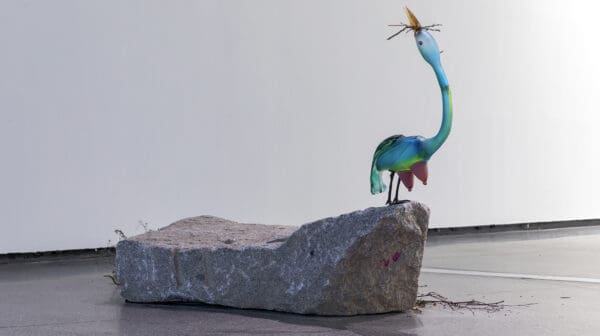
Laure Prouvost meets the real with the ludicrous
French-born/Belgium-based Laure Prouvost animates her first major Australian survey with her hallmark absurdism. ‘Oui Move In You’ is showing now at the Australian Centre for Contemporary Art.


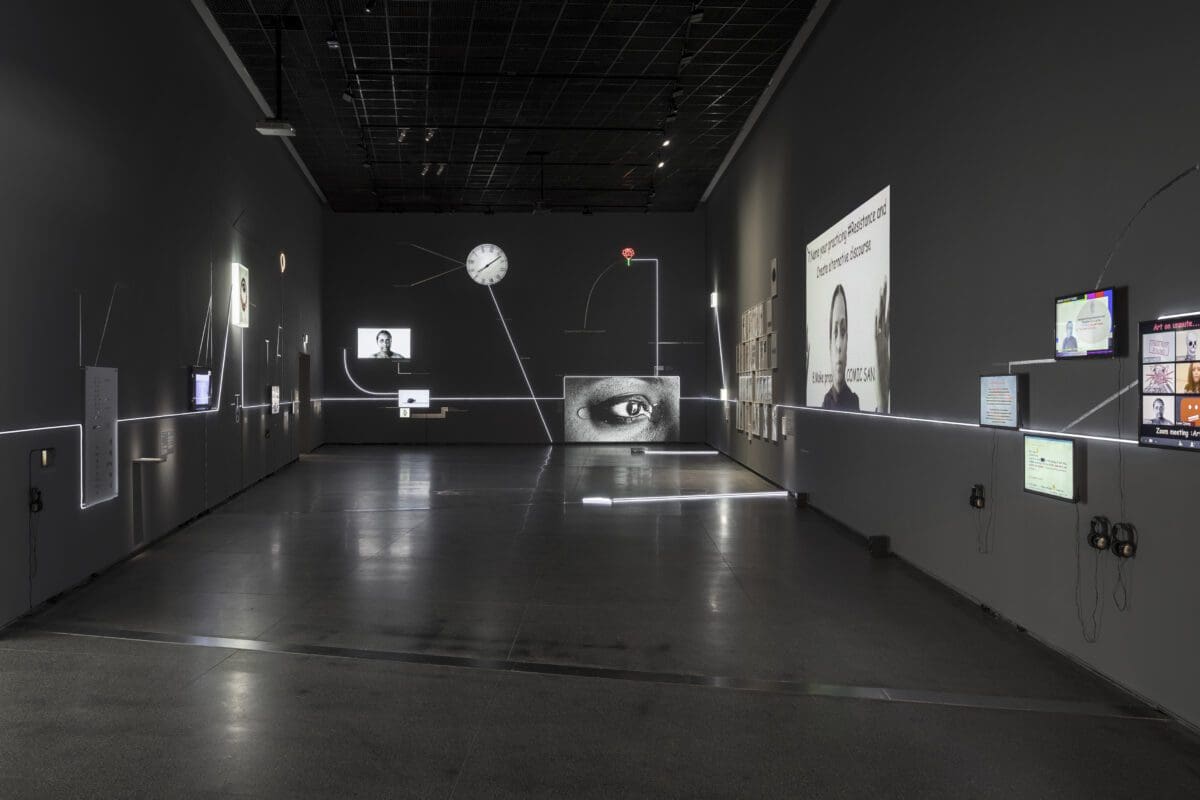
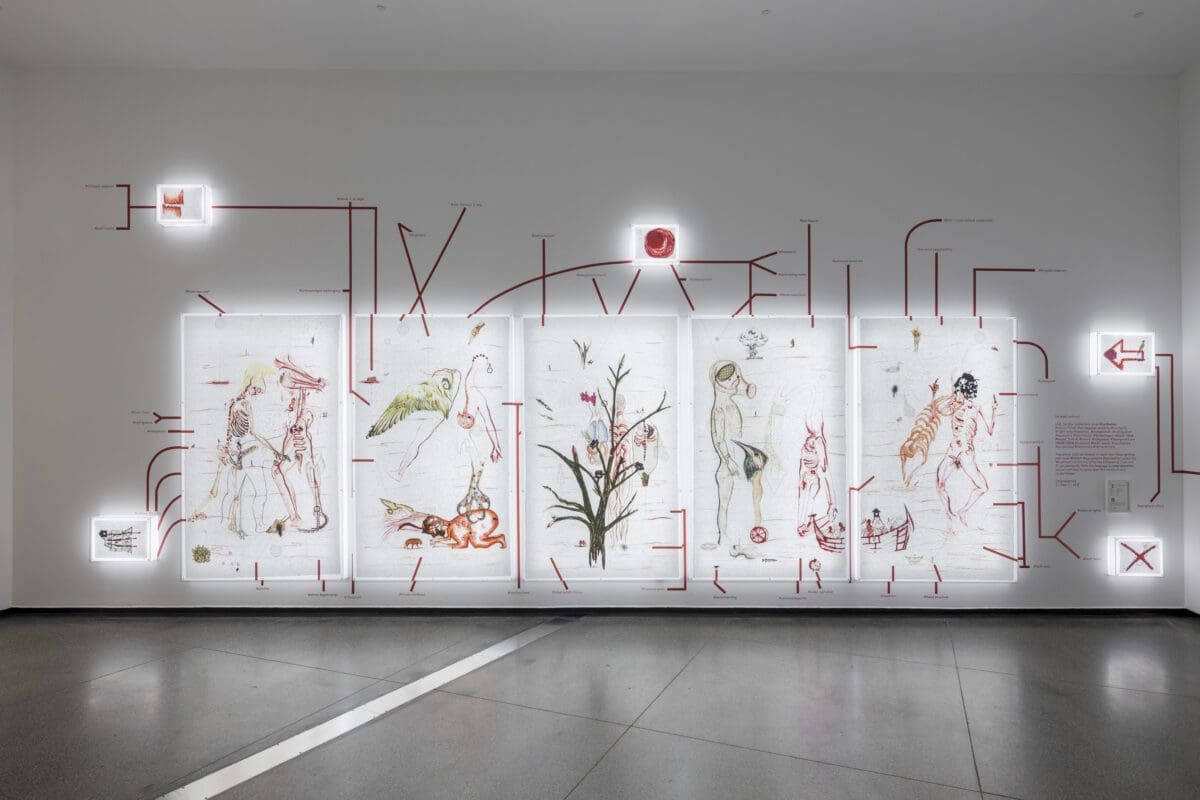
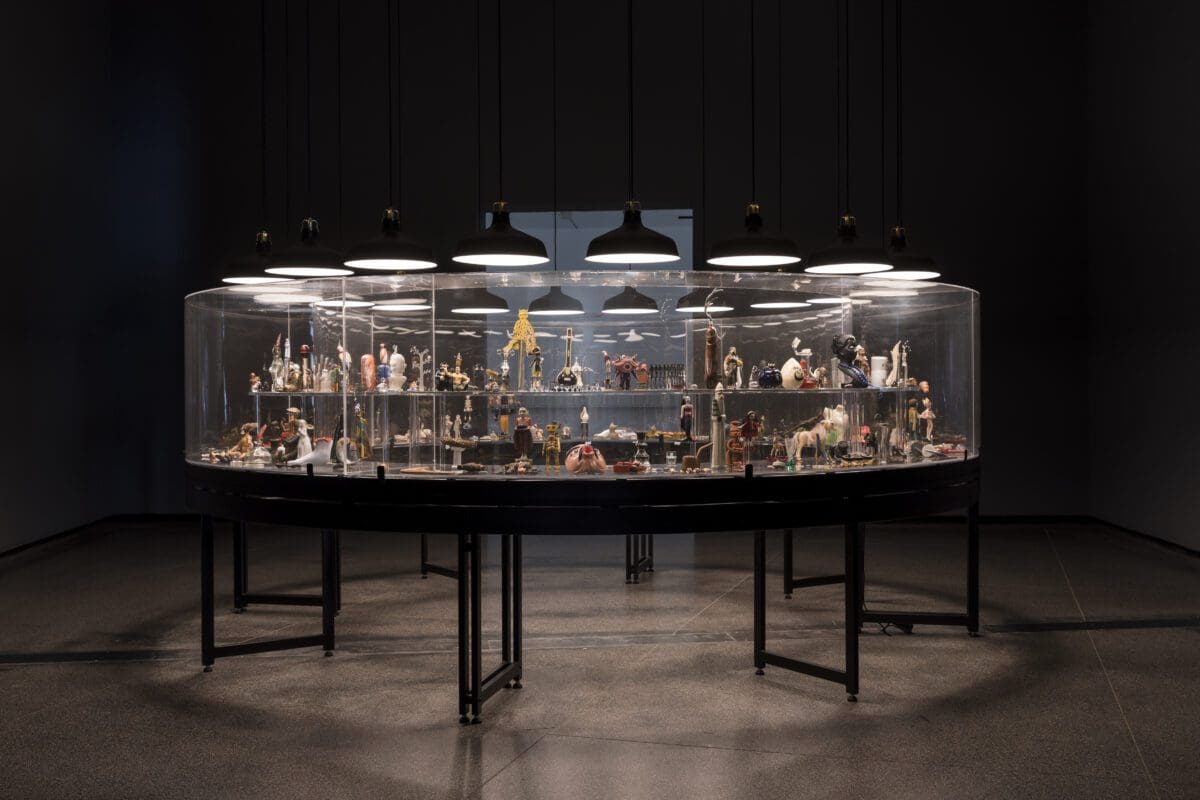
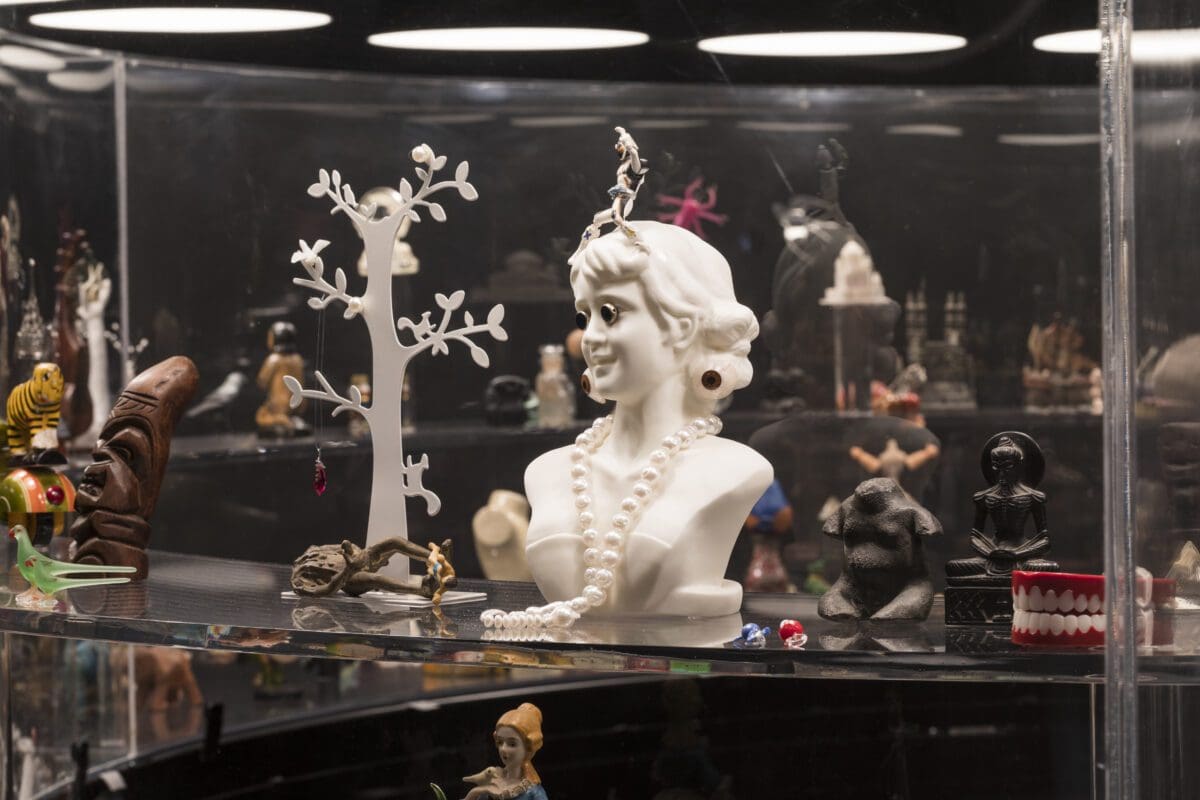

Indian artist Mithu Sen has recently been in Melbourne to install and open her solo exhibition mOTHERTONGUE at the Australian Centre for Contemporary Art (ACCA)—a sprawling presentation replete with large videos installations, drawings, sculpture and found objects. The scale speaks to Sen’s position as one of India’s leading contemporary artists, using a kind of anarchic language and art to unpack intersecting injustices of gender and race, but also the surface ‘niceties’ of the art industry and market.
She currently has work in the 2023 Sharjah Biennial and has previously exhibited at the Guggenheim Museum, New York and the Kochi-Muziris Biennale. Here, Sen talks with Amelia Winata about lingual anarchy, the complexity of exhibiting in Australia, and skepticism about globalisation.
Amelia Winata: Can you describe how your ACCA exhibition fits into your broader practice?
Mithu Sen: mOTHERTONGUE is a moment in the long arc of my engagement with lingual anarchy. Through the course of my practice, I have found myself returning to some themes and ongoing concerns, which I identify as my conceptual pillars. These are unmonolith identity, untaboo sexuality, lingual anarchy, counter-capitalism, and radical hospitality.
The title of the exhibition alludes to the more primal and corporeal relationship we have with language, through our bodies. I present it as an invitation and a provocation to abandon our known languages, and, instead, reflect on unintelligible and unknown languages to search for our common denominators. For me, language is a sign of imposed cultural differences, and English, a reminder of colonial dominance.
Over two decades, I have identified an uncodified subconscious language through visual and performative practices, which I call “un-language”. It is the primary material around which everything revolves. In this vein, the exhibition also elaborates on tropes and tools of identity and communication that I have used over the years, primarily the use of first-person singular to command an agency for my voice and complicating the guest-host relationship through radical hospitality, which in this case is exacerbated by me being an artist from the global south in Australia.
AW: That’s a very interesting observation, that you are very aware of your position as an artist from the so called “global south” here in Australia—a country with an extremely fraught history in relationship to colonisation and its ties to Europe. Can you elaborate on how you considered the Australian context of this exhibition when conceptualising it?
MS: Undertaking this exhibition in the Australian context was a challenge, because of the particular subjugation of Indigenous people, which is both systemic and ongoing, while also refracted through the rites of “acknowledgement”. The casual and perfunctory ubiquity of land acknowledgement statements everywhere stuck out to me: I was amazed by how a necessary and urgent recognition of settler colonialism and need for redistribution was turned into a footnote, meant to absolve the moral status of liberal and like-minded institutions. The more I delved into understanding relations of race, language, and subjugation, the more I could read into these codes.
The kernel of the affinities that I saw between the Australian context and mine are part of my “un-acknowledgement”, written as a contract, mimicking the language of disclaimers, statutory warnings, and legal clauses. It is through the unacknowledgement that I present the exhibition as a cultural contact zone, as a space where the peripheral languages are at the centre, and the manufactured regimes of control are dismissed.
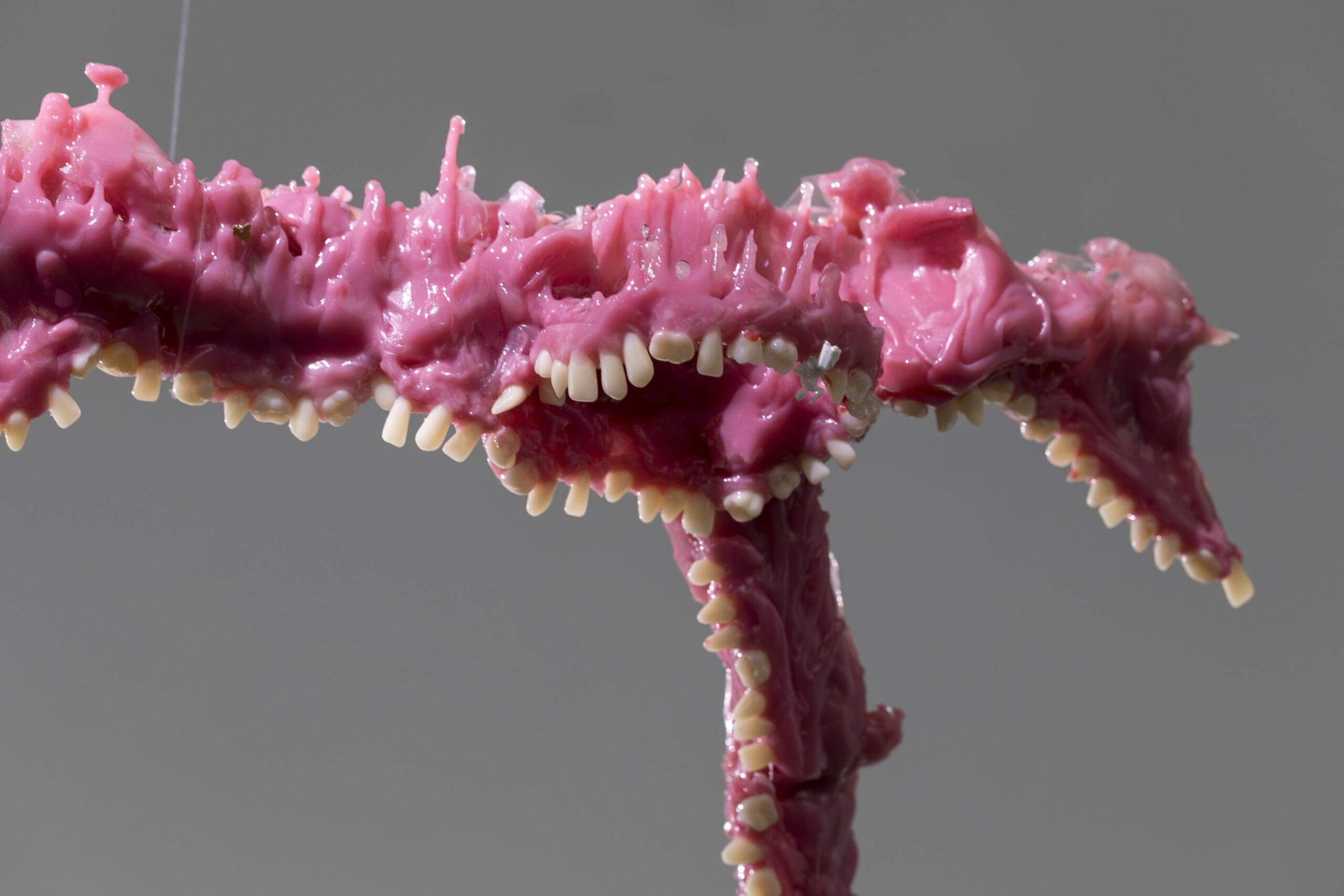
AW: How specifically do you see your work operating within a larger global discussion of post-colonialism?
MS: My works How to be a SUCKcessfull Artist, 2019, and Be beyond being, 2021, are pedagogical satire [artworks] that see conversation on postcolonialism bound within relations of neoliberalism, patriarchy, and the institutions of the art world and academia that are deeply entrenched in both.
For me, postcolonialism has been an intellectual resource that has opened up ways of thinking and understanding the afterlife of colonialism. However, as my art grew traction and I started traveling, getting invited, and so on—I also found that being postcolonial comes with its own problematic limitations. It facilitates a practice of self-exoticism to be deemed worthy of having your work consumed by the Western institutes of the art world and their audiences. In my performance, I take the element of play seriously. It is through the play of seduction that I trap the audience, and transform it into a strategy of subversion. I hope to exceed the East/West binary by creating a new Other—a non-pliable and impressionable woman who could not be understood, and one whose agency could not be taken away.
AW: I’m keen to drill down further into your experiences as an Indian woman in a global contemporary art scene more. In your art, you try to subvert the audience’s exoticisation of you through play. But generally speaking, how do you view the global art world today? The idea of self-exoticising to appeal to Western tastes is obviously quite a complex concept. Are the power balances shifting or should we be worried about an ongoing Western grip on the artworld?
MS: Self-exoticising is part of a strategic practice in my work, which I call radical hospitality. The idea is to identify, push, and subvert the expectations between guests and hosts—and in the case of my work for a more ‘global’ audience, it usually means testing relationships I enter in with museums, institutions, and curators. It is a tightrope to walk, because you want to remain alert of attempts to slot you in the category of ‘global south exotica’.
But, as I satirise in my video How to be a SUCKcessful Artist, 2019, this is not always something imposed by the West, many artists from the global south prefer to abide by cultural clichés. I think we should remain watchful, and I am not entirely convinced by the optimism of globalisation—the power imbalances remain, and now more than ever, problematic strains of colonial and patriarchal attitudes are masked in the veneer of respectability.
AW: Despite these very forceful themes in a lot of your practice, much of your work is also very delicate—you often employ paper and ink to aid this effect—and represents the human form in one way or another. I think it creates quite a visceral effect.
MS: Part of my work is indeed delicate, using paper and drawings. Most of my drawings echo a visceral and sensual engagement with the body that shifts from tender to grotesque to clinical. It is an aesthetic language that is rooted in my explorations of body and gender on one hand, and in formal experiments with drawing and paper on the other.
But these drawings span formats and themes, sometimes so diaphanous that they reproduce the play of light and shadows. And sometimes, so large that they impose over the room with their scale. I prefer to not see this visual sensibility as the only root of my aesthetics, which I have argued are largely conceptual. This is why performance is at the very heart of my practice, as I use visuality as both signature and artifice to undermine the trappings of the gaze, art market, and institutional edification.
AW: Yes, it is true that many of the drawings in the exhibition dominate by way of their scale and one could say they transcend into the realm of installation or sculpture. I am thinking, specifically, of the large-scale work titled Until you 206, 2021-22, which is comprised of 56 drawings and measures 4.5 metres in length. It occurs to me that there is a kind of meshing between performance and object going on in your work. In the main gallery at ACCA, too, the installation is in many respects built around performance documentation in the form of video footage, which is then weaved together with objects via a continuous white line. Does this idea of meshing resonate with you?
MS: Absolutely. I tend to not make a distinction between the different formats or mediums I work in. I have always insisted that my medium is “life”—and the materials I use are not in contradiction to one another but complementary. In the case of Until you 206, which is a series of pin-prick drawings, the puncturing of paper was an act of disciplined violence on a formal level—poking holes in the paper—which echoes the larger-scale violence that the series itself documents. The object is a consequence of performance, as you put it.
mOTHERTONGUE
Mithu Sen
Australian Centre for Contemporary Art
(Melbourne VIC)
Until 18 June